Everyone is looking to add more protein to their diet these days, but most protein-rich meal ideas out there feature large amounts of meat, eggs, or dairy that perhaps you’re looking to avoid.
Eating less animal sources of protein does have several benefits you can take advantage of, and there’s no reason that you need to eat animal sources of protein to get enough essential amino acids and other muscle-building nutrients in your diet.
The Possible Benefits of Eating Less Meat, Eggs, or Dairy

Certain plant-based sources of protein promote less inflammation in the body, they may be easier to digest if you don’t digest meat well or have an egg or dairy intolerance or allergy, and other plant-based sources of protein may promote higher levels of energy in the body since they contain natural carbohydrates and more fiber than animal sources of protein do.
Plant-based sources are also generally leaner and lower in fat, especially saturated fat which promotes inflammation in the heart and muscles.
All plant-based sources of protein are also cholesterol-free, unlike meat, eggs, and dairy, which all contain measurable amounts of cholesterol you may be looking to avoid. These benefits can all reduce your risk of cardiovascular disease and Type 2 diabetes just by opting for more plant-based sources of protein, but there are a couple things to keep in mind if you choose to opt for protein sources without eating meat, eggs, or dairy.
First, consider fish before you rule out all sources of animal protein. It’s one of the best sources of protein (and foods in general) for reducing inflammation in the body which makes it great for your heart, brain, and it’s even easy on the digestive system. Wild fish is also great for building lean muscle and reducing body weight if that’s a concern for you.
Secondly, if fish isn’t an option for you or if you’re vegan, then be sure to choose whole food sources of protein instead of mock meats and other highly processed meat, eggs, and dairy alternative foods. Whole foods are always healthier for your body and they contain fewer additives than processed sources of protein, and they’re generally easier to digest and more nutritious for you.
Now that you know what to keep in mind when you start adding more protein to your diet without eating meat, eggs, or dairy, here are some easy ways to eat more protein-rich plant-based foods!
How to Eat More Nutritious Sources of Plant-Based Protein
Learn to Love Lentils

Many of you may already know that lentils are a great source of protein and they’re one of the best to choose if you’re not eating meat, eggs, or dairy. Lentils are high in amino acids, fiber, and many key minerals you need to build lean muscle including iron, zinc, and magnesium. Lentils are also high in potassium, a mineral that helps reduce high blood pressure and can reduce water weight gain from excessive sodium or processed foods.
Lentils contain 11 grams of protein per ¼ cup which equals about ½ cup once prepared. They also include 13 grams of fiber and only 1 gram of fat per ¼ cup of dry lentils which makes them an incredibly lean source of protein that will also promote a healthy heart and digestion.
Lentils can feed all the muscles in your body and are generally very easy on the system. Red lentils tend to have a much smaller, thinner texture and a sweeter, nuttier flavor than other lentils. Studies have also shown that red lentils contain more antioxidants and beneficial nutrients than all other types of lentil varieties.
Try Them Out In…
Opt for lentils next time you make a chili, soup, stew, or even a meatless casserole. You can also use them to stuff tacos with in place of meat, top salads with them, or use them anywhere you would normally use ground beef since they have a similar texture and hearty flavor.
Have a Serving of Hemp Seeds
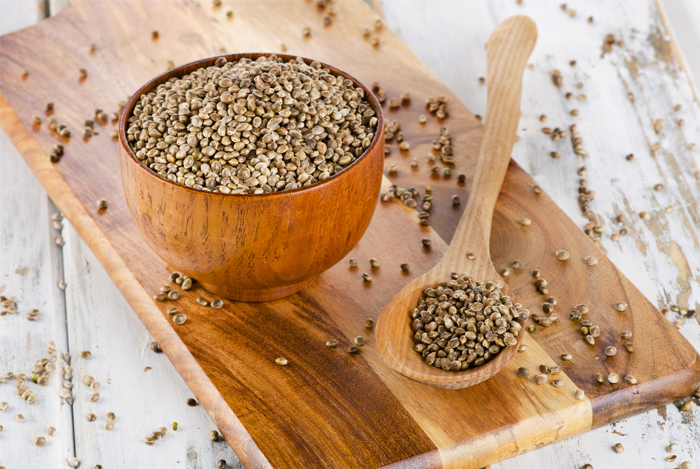
Hemp seeds are full of protein and they contain all essential amino acids which makes them a complete source of plant-based protein. Three tablespoons of hemp seeds contain 12-14 grams of protein depending on the variety along with fiber, magnesium, potassium, and iron. In fact, hemp seeds are one of the best sources of plant-based iron and magnesium among all grains, beans, and legumes. They’re also nutty in flavor and enjoyable to eat.
Hemp seeds are also rich in Vitamin E which is an important antioxidant for your immune system, heart, and skin. They’re also loaded with chlorophyll so they’re excellent at fighting inflammation within the body.
Look for hemp seeds at health food stores or feel free to purchase them online. Just be sure to keep them in the fridge or freezer like other nuts and seeds since their fats are delicate and prone to rancidity when stored on the shelf.
Try Them Out In …
Add raw hemp seeds into your next smoothie or make your own energy bars and bites with hemp seeds. They’re a great replacement (or addition) to nuts and are similar in nutritional benefits. You can also add hemp seeds to salads, soups, baked goods, or use them in place of flour when baking.
Eat a Daily Dose of Almonds

Almonds are a great source of Vitamin E, B vitamins, and they’re a decent source of protein for a nut. Almonds contain 7 grams of protein per ¼ cup which is about an ounce, or 22 almonds. Almonds have also been shown to promote heart health, aid in relaxation since they’re a good source of magnesium, and improve the skin since they’re high in Vitamin E and other antioxidants. They’re also a rich source of potassium which will help fight bloating and high blood pressure.
Try Them Out In …
Add some almonds to your next salad, eat them as a snack, or use almonds or almond butter in your smoothie or morning oatmeal. You can also make your own energy bars and bites with them and use almond butter in place of eggs and oil when baking. Choose raw, unsalted, and unroasted varieties of both almonds and almond butter for the most nutritional benefits, and do your best to avoid those without added sugars or oils as well.
Since almonds are high in fat, you don’t want to overdo your intake of nut-based sources of protein and they can tend to cause a stomachache if you eat too many at one time. However, enjoying one serving of nuts and seeds per day is a great way to up your intake of plant-based, heart-healthy protein without eating any meat, eggs, or dairy products.
Try Some Tahini
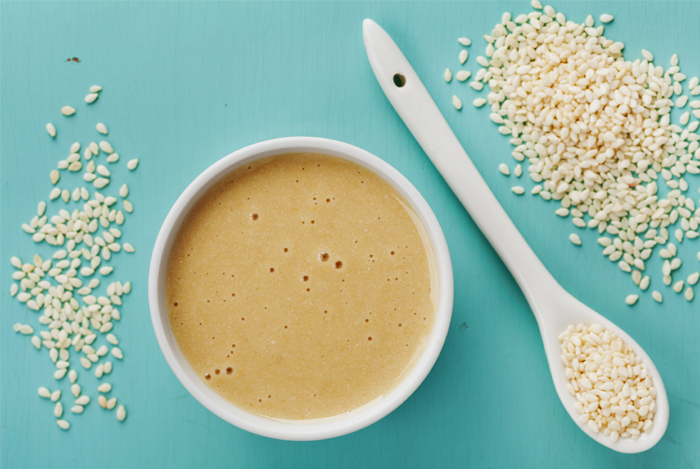
If you’re not familiar with tahini, it’s time to familiarize yourself with this delicious, savory spread. Tahini is just ground sesame seeds, or sesame seed butter. Tahini is packed with 15% of your daily iron needs and 8 grams of protein per 2 tablespoons, or about an ounce.
Tahini is also a great source of magnesium, Vitamin E, and zinc to keep your hair, skin, muscles, and heart in optimal health. It makes a great replacement for peanut butter and almond butter if you don’t tolerate nuts very well, and it has a unique flavor that can be used in a variety of ways.
Try it Out In …
Tahini has a delicious, savory and nutty flavor that makes it easy to enjoy in both sweet and savory dishes. It’s commonly used as a salad dressing ingredient and can also be used in porridge, smoothies, in hummus or other dips, or used anywhere you would normally use another variety of nut butter.
Bring on the Black Beans
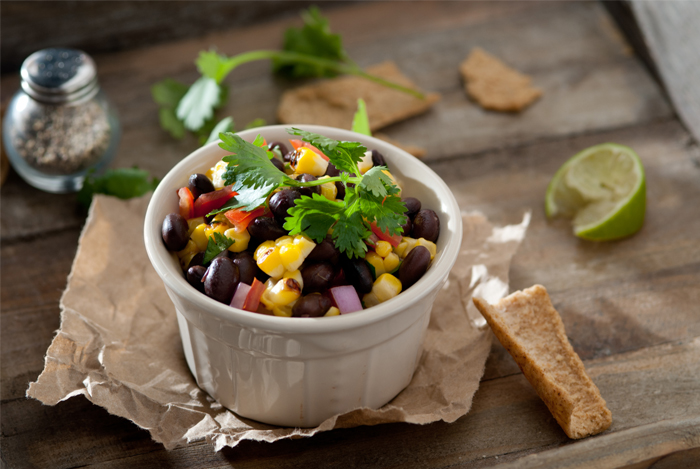
Black beans are loaded with 15 grams of protein per cup and are a commonly loved food among bodybuilders and athletes looking to eat more protein. Black beans are also high in iron, magnesium, and antioxidants which makes them an overall healthy choice for a variety of reasons.
Studies have also shown that black beans are useful for directly reducing inflammation in the body and improving digestive health. Beans are also some of the best foods for your heart outside of whole grains. A quick soak overnight will make them easier to digest and a quick rinse is all they need before cooking to ensure they don’t cause digestive upset.
Try Them Out In …
Black beans go great in Mexican dishes like tacos and fajitas, but that’s not the only way you can enjoy them; add some black beans to your next salad, stew, soup, or make a meatless burger with black beans.
One of the best parts about using these beans in place of meat is their satisfaction factor and delicious flavor. They’re even one of the most popular varieties of beans eaten even among meat eaters since they’re so delicious!
Add a Little Amaranth to Your Day

Amaranth is a grain-free seed but it cooks just like other grains such as rice or oats do. Amaranth is rich in iron and also packed with protein like most seeds are. It has a nutty, earthy, and slightly sweet flavor and contains 8 grams of protein per ½ cup of cooked amaranth, or ¼ cup uncooked seeds. It also doesn’t need to be soaked like some grains or beans do before cooking, so it’s great if you enjoy eating quick-fix meals.
You can find amaranth in the bulk section of your local health food store, order it online, or you can find it in some more mainstream grocery stores where you would find other grains and grain-like seeds such as quinoa and rice.
Try it Out In …
To eat amaranth, feel free to add it to any soup, stew, or cook it up as a pilaf like you would rice or quinoa and serve it with vegetables for a filling lunch or dinner. You can also use it in place of oats or mix it with oats next time you enjoy a hot bowl of porridge. Or, make popped amaranth which is a fun snack to enjoy that is similar to popcorn. All you do is pop the seeds in a heated pan just like you would regular popcorn kernels!
Cook up Some Quinoa
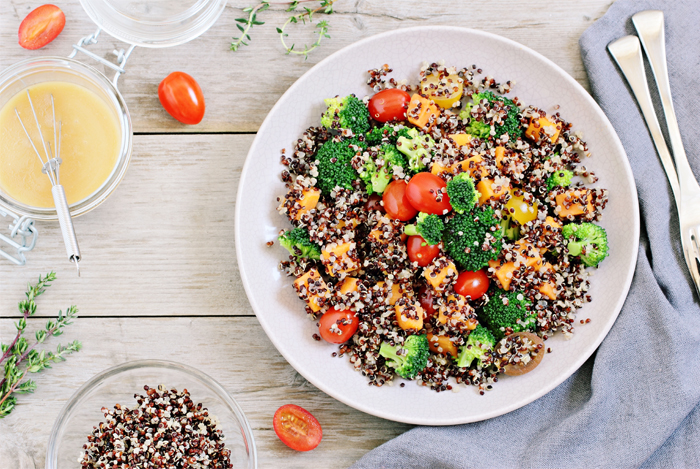
Quinoa is a popular grain-like seed that’s high in protein just like amaranth, and it’s a good source of trace minerals like magnesium and potassium. It contains around 7 grams of protein per ¼ cup uncooked quinoa, which is about ½ cup prepared.
Quinoa is a great meatless source of protein because it contains all of the essential amino acids needed by the body which makes it a complete protein source. It’s also high in iron, folic acid, and the amino acid lysine which helps form strong muscles.
Try it Out In …
Quinoa comes in both flake and whole seed varieties, and it’s even available in many different colors such as red, black, and white quinoa. The flake varieties of quinoa cook up like oats do, or you can use them in place of oats in dishes like meatless burgers, soups, stews, and casseroles. Whole quinoa seeds cook up like a rice pilaf and can also be cooked into a warm porridge at breakfast just like oats can.
Be sure that if you use the whole seed form of quinoa that you buy pre-rinsed varieties or give it a really good rinse before using it. Quinoa contains a compound known as saponins on the outside of the seed which can be bitter and cause digestive issues if not rinsed before cooking.
Eat More Oats
Oats are one of the best sources of plant-based protein, but they’re also one of the most overlooked sources at that. While they’re not a complete source of protein, they contain higher amounts of nutrients per serving than all other grains and grain-like seeds. Oats are one of the best foods to reduce cholesterol, they’re generally easily tolerated, and they’re high in fiber and extremely filling which will help keep you full a longer time than lower fiber grains such as rice.
Oats contain 7 grams of protein per ⅓ cup, along with 6 grams of fiber and only 3 grams of fat. You can also eat oat bran for more protein and fiber which is the most nutrient-dense part of the oat grain.
Finally, oats are also high in minerals that promote healthy muscles such as calcium, potassium, magnesium, iron, and zinc. You can enjoy them in quick, rolled, or steel cut form, and they can be prepared in a variety of ways from soaking them overnight to enjoying them in baked goods or a hot porridge.
Try a Raw, Plant-Based Protein Powder
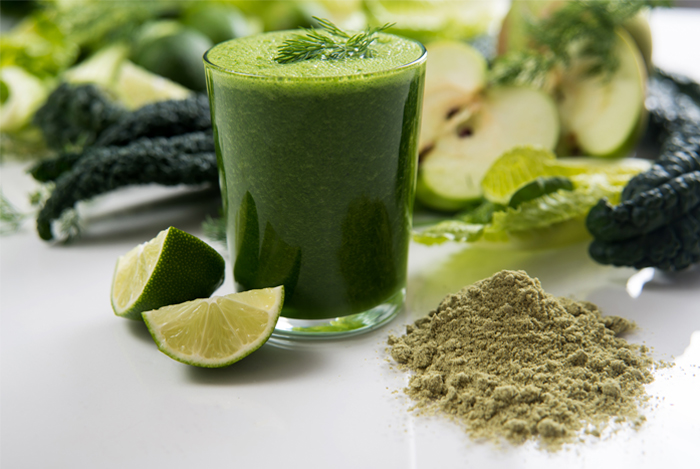
If you don’t tolerate a lot of beans and grains, try a raw plant-based protein without fillers and additives if you’re looking for a quick and easily digested way to take in more protein. While whey protein has many health benefits, those looking to avoid dairy won’t be able to use whey protein in recipes like shakes and smoothies, so plant-based protein powder options fit the bill well.
Look for a raw plant-based protein powder with added enzymes and probiotics which will aid digestion and nutrient absorption further, and always go for those without added sugars and genetically modified ingredients as the healthiest option.
Try Them Out In …
Plant-based protein powders can be used in smoothies, stirred into oatmeal, or even mixed with some chia or hemp seeds and almond milk with fruit to make a thick dessert protein pudding. There are limitless ways you can use them and they’re not just useful to athletes looking to eat more protein but may be helpful to a variety of individuals who are looking to add more protein to their routine.
Other Ways to Eat More Protein Without Meat, Eggs, or Dairy

Eat more greens which are loaded with protein! Spinach contains 5 grams per cup and kale is also a great source along with romaine and wild greens like dandelion greens. Common vegetables like broccoli and asparagus are also great choices; both of them contain around 4 grams per cup, and they’re a great source of fiber and B vitamins.
Remember that your body can use incomplete source of protein just like it can complete sources of protein, so you don’t need to worry about combining different sources to ensure you get enough. It’s more important to focus on eating a little protein with each meal and try to get at least 50 grams per day, though active individuals or those looking to pack on muscle may need much more, such as up to 1 gram of protein per pound of body weight.
Along with eating more protein, be sure you’re also eating enough complex carbs and healthy fats from whole foods, and be sure that you’re eating a variety of these protein sources instead of relying on just one or two at all your meals. A balanced diet is the best option for your heart, brain, and is needed to pack on muscle mass no matter if you eat plant-based or animal-based sources of protein.
The post How to Eat More Protein Without Eating Meat, Eggs, or Dairy appeared first on Nutrition Secrets.
http://www.nutritionsecrets.com/how-to-eat-more-protein-without-eating-meat-eggs-or-dairy/
No comments:
Post a Comment